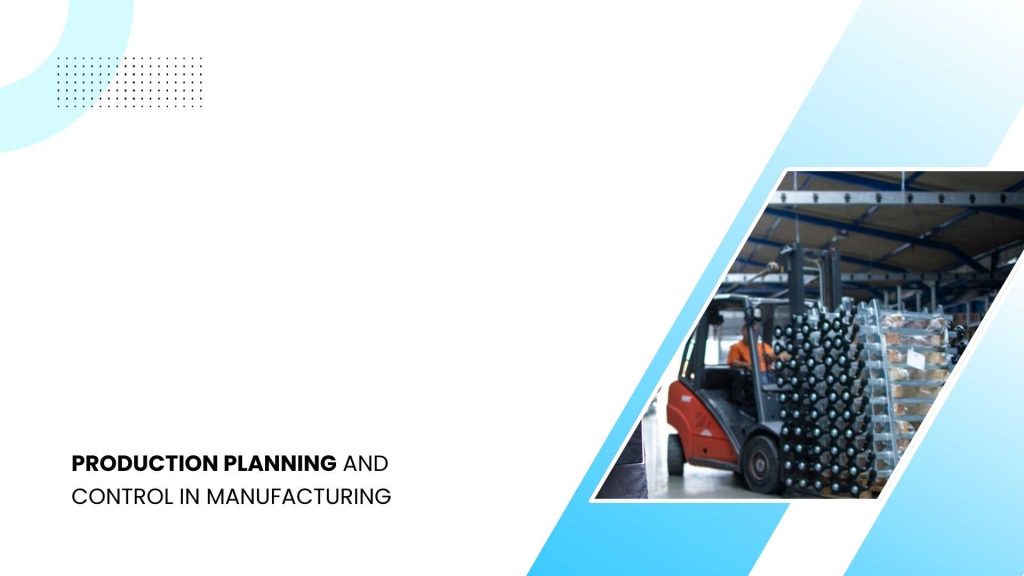In the intricate manufacturing realm, where precision and efficiency reign supreme, the linchpin orchestrating the seamless dance of resources, timelines, and quality is Production Planning and Control (PPC). At the heart of every successful manufacturing operation lies a well-crafted production plan, a strategic roadmap that optimizes resource utilization and serves as a beacon for meeting customer demands, reducing costs, and ensuring product quality.
This dynamic duo of planning and control is the cornerstone of operational excellence, providing manufacturers with the agility to adapt to change, mitigate risks, and ultimately thrive in a competitive landscape. In this article, we will unravel the vital role of efficient Production Planning and Control in the intricate tapestry of modern manufacturing, exploring its key components and addressing common challenges faced in pursuing manufacturing prowess.
Key Reasons for Efficient Production Planning:
Optimal Resource Utilization:
Efficient production planning enables manufacturers to maximize the use of resources, be it raw materials, equipment, or labor. Manufacturers can enhance productivity, reduce waste, and improve profitability by carefully scheduling production processes and minimizing downtime. This aspect of production planning is essential for maintaining competitiveness in today’s global market.
Meeting Customer Demand & Cost Reduction:
Meeting customer demands promptly and cost-effectively is a primary objective of any manufacturing operation. Efficient production planning ensures that the right amount of products is produced at the right time, preventing overproduction or shortages. It keeps customers satisfied and helps reduce costs associated with excess inventory or rush orders.
Flexibility and Adaptability:
In a dynamic market, the ability to adapt to changing circumstances is crucial for manufacturers. Efficient production planning provides the flexibility to adjust schedules, production quantities, and resources in response to unexpected events, such as changes in customer demand, supply chain disruptions, or equipment failures. This adaptability ensures manufacturers can navigate challenges effectively and maintain operations without significant disruptions.
Improved Quality Control:
Quality control is paramount in manufacturing to uphold the brand’s reputation and meet industry standards. Efficient production planning incorporates quality control measures at every stage of the manufacturing process. By monitoring and controlling variables, manufacturers can specify and fix possible issues before they escalate, resulting in higher-quality products and customer satisfaction.
Issues in Production Planning
Cost Management:
Cost management is a perpetual challenge in manufacturing, and production planning plays a pivotal role in addressing this issue. Effective planning involves optimizing processes to minimize waste, streamlining workflows, and identifying cost-saving opportunities. Manufacturers can enhance their bottom line by meticulously managing costs throughout the production cycle and remain competitive.
Continuous Improvement:
Continuous improvement is a mindset that successful manufacturers adopt to stay ahead of the curve. Production planning should not be static; instead, it should evolve with changing circumstances and incorporate feedback from the production floor. Executing a culture of constant improvement assures that production planning strategies are always aligned with industry best practices, technology advancements, and market trends.
Production Delay:
Production delays can affect the supply chain, leading to inflated costs and customer dissatisfaction. Efficient production planning minimizes the risk of delays by accurately forecasting demand, maintaining well-balanced inventory levels, and optimizing production schedules. By proactively addressing the root causes of potential delays, manufacturers can ensure a smoother production flow and meet delivery timelines consistently.
Conclusion
Acumatica ERP is a beacon of innovation for enhancing Production Planning and Control. By seamlessly integrating key functionalities such as resource management, demand forecasting, and real-time data analytics, Acumatica empowers manufacturers to elevate their production planning strategies to new heights.
With its user-friendly interface and cloud-based architecture, Acumatica provides unparalleled flexibility, enabling real-time collaboration and adaptability to changing market dynamics.
The comprehensive insights offered by Acumatica ERP optimize resource utilization and bolster cost management and quality control. Acumatica emerges as a transformative tool, fostering efficiency, agility, and precision in Production Planning and Control, setting the stage for manufacturing enterprises to thrive in a competitive and dynamic environment.

Vijay comes with a vast experience in ERP and enterprise solutions space with about 20 years of experience in various packaged application like Acumatica, SAP, Orion, Salesforce.com, SugarCRM and, SalesLogix.

